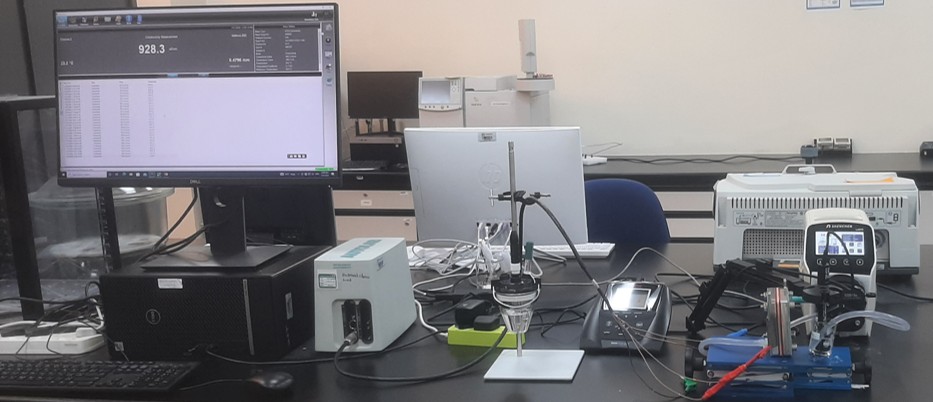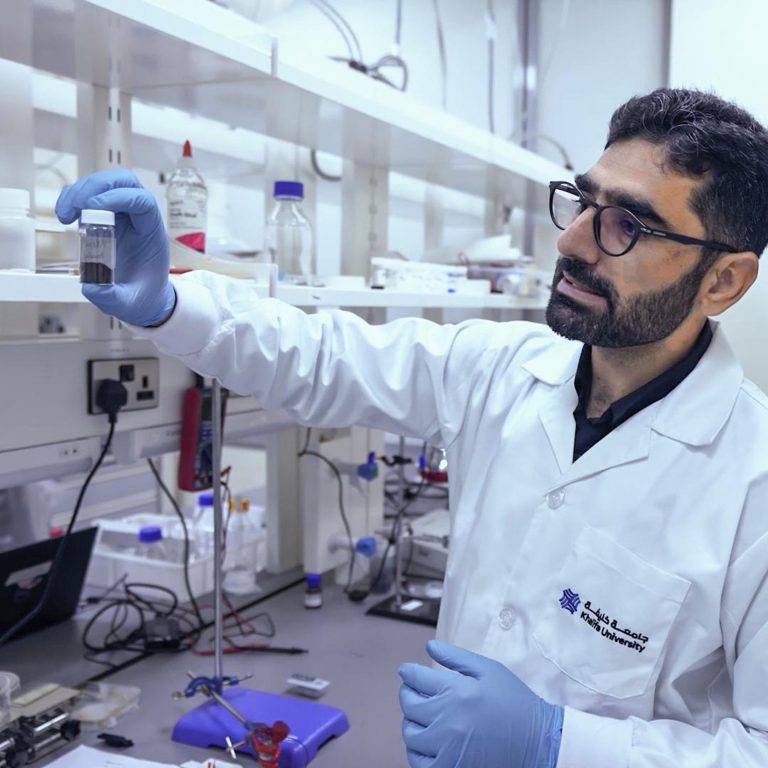From brine to batteries
A single atom of nitrogen leads a research team to mine lithium from brine, turning desert waste to wealth.
In the shimmering heat of the Arabian Peninsula, a quiet revolution is underway; not in the depths of the earth, but in the invisible waste streams flowing from desalination plants. In the discarded brine, a precious element hides in plain sight: lithium, the lifeblood of the electric age.
Traditionally lithium is extracted from hard rock and salt flats, both involving processes that guzzle water and scar ecosystems. Now researchers have found a new source of lithium in the desert’s own waste stream.
At Khalifa University, Dinesh Shetty, theme leader at the Center for Catalysis and Separation, leads a research group to unlock this potential. He and his team are using a new class of designer materials known as covalent organic frameworks (COFs). These are porous structures engineered with atomic precision to selectively trap lithium ions.
“We use immense amounts of water to mine lithium, while we waste lithium-rich water in the form of brine. That’s the irony we’re solving.”
Dinesh Shetty
“These aren’t just powders,” Shetty explains. “They’re precision materials. We design them at the atomic level, positioning nitrogen atoms as active centers to selectively capture lithium.”
Working alongside Shetty is Rajesh Dhanushkotti, a postdoctoral researcher specializing in electrochemical processes. “Just apply a specific voltage and lithium sticks to the electrode. Then we reverse the voltage and recover it. No mess, no waste,” Dhanushkotti explains.

With just 1.4 volts, barely more than the potential from an AA battery, the process extracts lithium from brine without any toxic footprints. It’s a radical shift from conventional methods that rely on harsh, chemical solvents and guzzle large amounts of energy.
“It’s a contradiction,” Shetty notes. “We use immense amounts of water to mine lithium, while we waste lithium-rich water in the form of brine. That’s the irony we’re solving.”
PhD researcher and team member Najat Aldaqqa focuses her work on resource recovery. She turned to nitrogen atoms. “Nitrogen atoms are like magnets,” she explains. “They increase lithium selectivity and boost adsorption capacity,” she says. “Our data shows the more nitrogen we embed, the better our performance.”
Their study marks the first time COFs have been successfully used in this type of lithium recovery and the results are impressive even at this early stage. The team’s material was able to recover 15.7 milligrams of lithium for every gram of material used, pulling out more than 80% of the lithium from the test solution.
The researchers are now creating a larger test system to use on real saltwater from desalination plants, which generate an estimated 124.5 million cubic meters of brine daily. “We’re scaling up and it’s just the beginning,” Dhanushkotti says. “Our goal is a stacked system using real brine.”
For a region built on desalination, this could be game-changing. Instead of just producing clean water, desalination plants could offer energy independence. “Why not make the UAE a source of lithium too?” Shetty says. “It’s a chance to lead in circular economy thinking.”
Reference
Dhanushkotti, R.; Bin Omer, M.; Alabsi, A.; Najat, N.; Almutairi, A.; Shetty, D., Inherited Nitrogen Distribution Control in Covalent Organic Framework Cathodes for Efficient Lithium Recovery. Adv. Sci., 12 (25), 2308213, 2025. | Article




